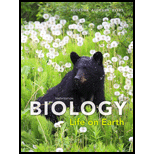
Concept explainers
Animals obtain energy by ______; they generally reproduce __ and their cells lack _______.
To review:
The given blank space in the statement, “animals obtain energy by__________; they generally reproduce____________, and their cells lack __________.”
Introduction:
Animals, unlike plants, cannot make its own food from the inorganic molecule. It is difficult to give the definition of animal and no definite character can define animal, so a list of character together defines an animal. These characters are not exclusive to an animal but together they distinguish other taxonomic groups from animal.
Explanation of Solution
Animals consume other organisms to get energy. Plants are the producers. They make food from sunlight. Herbivores like deer, eat them and then carnivorous animals eats herbivorous animals.
Reproduction is one of the key features of life. All organisms exist due to reproduction. There are mainly two kinds of reproduction, namely asexual and sexual. In asexual reproduction, an organism reproduces without the involvement of another organism and makes the same genetically similar or identical copy of it.
Normally, single-celled organism reproduces this way. Animals reproduce sexually. In sexual reproduction, two organisms are involved. Gametes (sperm and egg) from these organisms fuse together (fertilization) and after a series of cell division, a new organism is produced.
The cell wall is permeable, tough, flexible and made up of polysaccharides cellulose, hemicelluloses, and pectin. The cell wall is not present in the animal cells and it can be seen in plants, bacteria, fungi, and algae.
Animals obtain energy by consuming another organism; they generally reproduce sexually, and their cells lack cell walls.
Want to see more full solutions like this?
Chapter 23 Solutions
Biology: Life on Earth
- What symbolic and cultural behaviors are evident in the archaeological record and associated with Neandertals and anatomically modern humans in Europe beginning around 35,000 yBP (during the Upper Paleolithic)?arrow_forwardDescribe three cranial and postcranial features of Neanderthals skeletons that are likely adaptation to the cold climates of Upper Pleistocene Europe and explain how they are adaptations to a cold climate.arrow_forwardBiology Questionarrow_forward
- ✓ Details Draw a protein that is embedded in a membrane (a transmembrane protein), label the lipid bilayer and the protein. Identify the areas of the lipid bilayer that are hydrophobic and hydrophilic. Draw a membrane with two transporters: a proton pump transporter that uses ATP to generate a proton gradient, and a second transporter that moves glucose by secondary active transport (cartoon-like is ok). It will be important to show protons moving in the correct direction, and that the transporter that is powered by secondary active transport is logically related to the proton pump.arrow_forwarddrawing chemical structure of ATP. please draw in and label whats asked. Thank you.arrow_forwardOutline the negative feedback loop that allows us to maintain a healthy water concentration in our blood. You may use diagram if you wisharrow_forward
- Give examples of fat soluble and non-fat soluble hormonesarrow_forwardJust click view full document and register so you can see the whole document. how do i access this. following from the previous question; https://www.bartleby.com/questions-and-answers/hi-hi-with-this-unit-assessment-psy4406-tp4-report-assessment-material-case-stydu-ms-alecia-moore.-o/5e09906a-5101-4297-a8f7-49449b0bb5a7. on Google this image comes up and i have signed/ payed for the service and unable to access the full document. are you able to copy and past to this response. please see the screenshot from google page. unfortunality its not allowing me attch the image can you please show me the mathmetic calculation/ workout for the reult sectionarrow_forwardIn tabular form, differentiate between reversible and irreversible cell injury.arrow_forward
 Biology Today and Tomorrow without Physiology (Mi...BiologyISBN:9781305117396Author:Cecie Starr, Christine Evers, Lisa StarrPublisher:Cengage Learning
Biology Today and Tomorrow without Physiology (Mi...BiologyISBN:9781305117396Author:Cecie Starr, Christine Evers, Lisa StarrPublisher:Cengage Learning Biology: The Unity and Diversity of Life (MindTap...BiologyISBN:9781337408332Author:Cecie Starr, Ralph Taggart, Christine Evers, Lisa StarrPublisher:Cengage Learning
Biology: The Unity and Diversity of Life (MindTap...BiologyISBN:9781337408332Author:Cecie Starr, Ralph Taggart, Christine Evers, Lisa StarrPublisher:Cengage Learning
 Biology 2eBiologyISBN:9781947172517Author:Matthew Douglas, Jung Choi, Mary Ann ClarkPublisher:OpenStax
Biology 2eBiologyISBN:9781947172517Author:Matthew Douglas, Jung Choi, Mary Ann ClarkPublisher:OpenStax Concepts of BiologyBiologyISBN:9781938168116Author:Samantha Fowler, Rebecca Roush, James WisePublisher:OpenStax College
Concepts of BiologyBiologyISBN:9781938168116Author:Samantha Fowler, Rebecca Roush, James WisePublisher:OpenStax College





